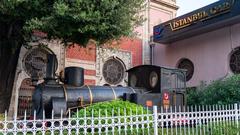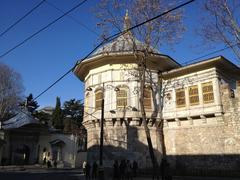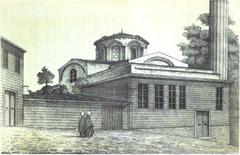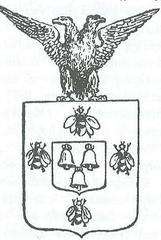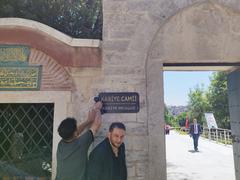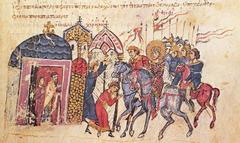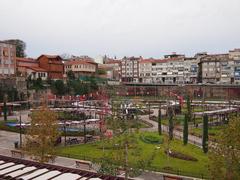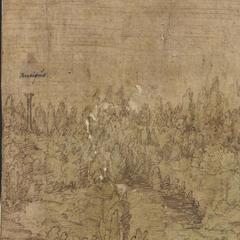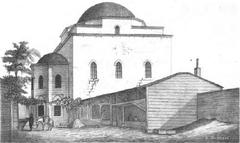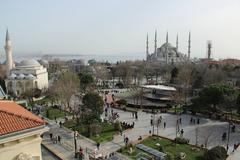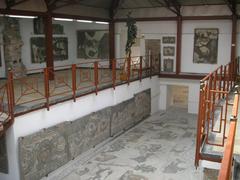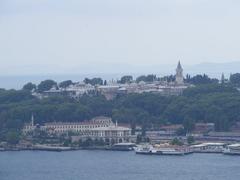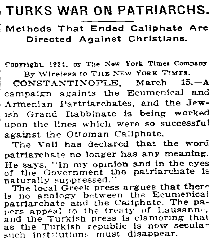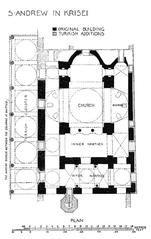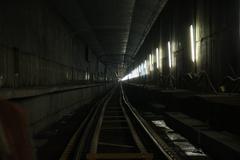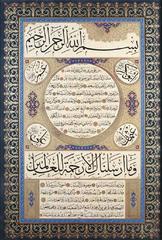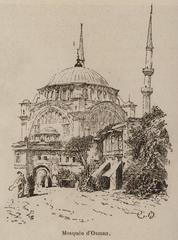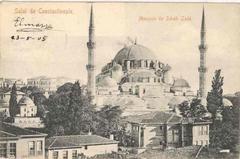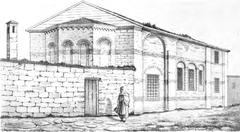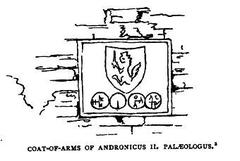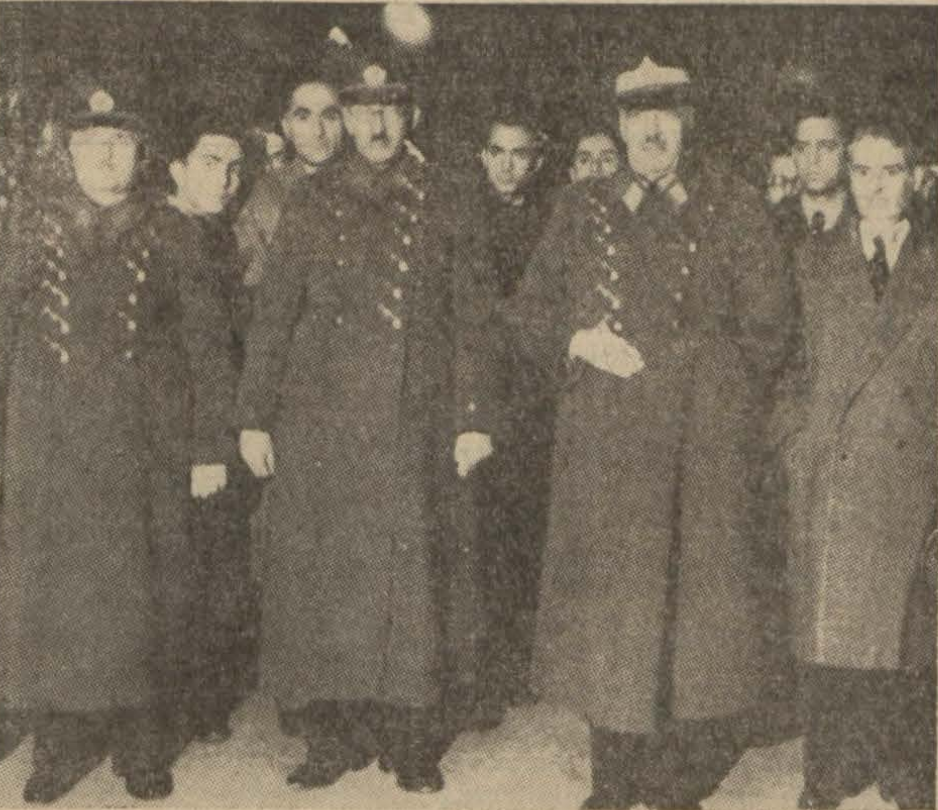
Sirkeci Railway Station: Visiting Hours, Tickets, and History Guide
Date: 14/06/2025
Introduction
Situated in Istanbul’s historic Fatih district, Sirkeci Railway Station stands as a monumental testament to the city’s enduring role as a crossroads between East and West. Built in 1890 as the eastern terminus of the legendary Orient Express, the station represents not only an architectural marvel but also a vibrant symbol of Istanbul’s cosmopolitan spirit and modernization ambitions. Designed by German architect August Jasmund, Sirkeci blends European Orientalist styles with Ottoman motifs, reflecting the city’s dynamic identity during the late Ottoman Empire (Istanbul Metropolitan Municipality; transportationhistory.org).
Beyond its function as a transportation hub, Sirkeci serves as a living museum of Istanbul’s railway heritage. Its architectural features—horseshoe arches, stained-glass windows, marble columns, and ornate woodwork—continue to captivate visitors. The station has welcomed diplomats, royalty, writers, and adventurers, and has been immortalized in works like Agatha Christie’s “Murder on the Orient Express” (Smithsonian Magazine; Agatha Christie Limited).
Today, Sirkeci Railway Station is a vibrant cultural venue and an essential stop for those eager to explore Istanbul’s rich historical tapestry. It houses the Istanbul Railway Museum, hosts Mevlevi Dervish ceremonies, and sits within walking distance of renowned landmarks such as the Spice Bazaar, Topkapı Palace, and Galata Bridge. With accessible facilities, guided tours, and a calendar of events, Sirkeci bridges history, art, and urban life (Nomadic Niko; Mog and Dog Travels).
This detailed guide explores Sirkeci Railway Station’s historical significance, architectural grandeur, practical visitor information, and tips to enrich your experience at one of Istanbul’s most treasured sites.
Table of Contents
- Origins and Construction
- Architectural Features and Innovations
- The Orient Express Era
- Sirkeci’s Role in Ottoman and Republican Eras
- Preservation and Current Use
- Visiting Hours and Tickets
- Notable Events and Anecdotes
- Urban Context and Nearby Attractions
- Legacy and Continuing Influence
- Frequently Asked Questions (FAQs)
- Summary and Visitor Recommendations
- Sources
Origins and Construction
Sirkeci Railway Station was conceived as part of the Ottoman Empire’s ambitious efforts to modernize and connect Istanbul with European capitals via the Orient Express. The need for a terminus on Istanbul’s European side became clear in the 1850s, and by 1888, construction began under the direction of August Jasmund. Jasmund’s Orientalist design drew upon both European trends and Ottoman aesthetics, and the station was inaugurated on November 3, 1890 (Istanbul Metropolitan Municipality; Turkish State Railways).
Architectural Features and Innovations
Sirkeci impresses with its red-brick façade, horseshoe arches, polychrome tilework, and stained-glass windows (ArchNet). Inside, high ceilings, marble columns, ornate woodwork, and tile stoves imported from Austria-Hungary underscore the station’s blend of comfort and elegance. At its opening, Sirkeci featured gas lighting and central heating—cutting-edge for late 19th-century Istanbul. The station’s layout, with separate lounges for different classes, a grand arrival hall, and a restaurant, reflected both functional needs and social hierarchies.
The Orient Express Era
Sirkeci rose to international fame as the eastern terminus of the Orient Express, which first arrived in Istanbul in 1883. The luxury train service became synonymous with intrigue and cross-continental travel, attracting diplomats, royalty, and writers. The station’s elegant restaurant and bar became social hubs for travelers and Istanbul’s elite. Its role in popular culture was cemented by appearances in literature and film, most notably Agatha Christie’s “Murder on the Orient Express” (Smithsonian Magazine; Agatha Christie Limited).
Sirkeci’s Role in the Ottoman and Republican Eras
As a modern gateway, Sirkeci contributed to Istanbul’s transformation, facilitating trade, diplomacy, and cultural exchange. During the early Turkish Republic, it continued as Istanbul’s primary European-side terminal, witnessing historical events such as Atatürk’s arrivals, and adapting to changing transportation demands (Daily Sabah).
Preservation and Current Use
With the decline of long-distance rail and the end of regular Orient Express runs in 1977 (The Guardian), Sirkeci’s prominence faded. However, major restoration in 2005 preserved its original features, and the Istanbul Railway Museum, opened the same year, now showcases artifacts, photographs, and documents chronicling Turkey’s rail history (Hurriyet Daily News; Istanbul Railway Museum). The station also hosts art galleries, thematic museums, and Mevlevi Dervish ceremonies (TRT World).
Visiting Hours and Tickets
- Istanbul Railway Museum: Tuesday to Saturday, 9:00 AM – 12:00 PM and 1:00 PM – 5:00 PM (Istanbul Railway Museum).
- General Station Access: Open daily, 9:00 AM – 6:00 PM for visitors.
- Admission: Entry to the station and museum is free. Tickets are required only for special events (e.g., Mevlevi Dervish ceremonies).
- Facilities: Public restrooms require a small fee.
Accessibility and Visitor Tips
- Accessibility: The station is generally wheelchair accessible, with ramps and elevators. Some older architectural features may still pose challenges; check ahead if you have specific needs (travelstoreturkey.com).
- Getting There: Sirkeci is directly accessible by the T1 tram, Marmaray rail, and several bus and ferry lines (istanbul.tips; mikestravelguide.com).
- Best Times to Visit: Weekday mornings are quietest. Early morning or late afternoon offers optimal light for photography.
- Guided Tours: Available through local operators or special events; check official and tourism websites for schedules.
Notable Events and Anecdotes
Throughout its history, Sirkeci has been the backdrop for numerous diplomatic arrivals, war-time dispatches, and cultural milestones. The station’s lore is rich with tales of intrigue, romance, and artistic inspiration. Agatha Christie is rumored to have drawn on the station’s unique atmosphere while writing her iconic novel (Pera Palace Hotel). Today, Sirkeci’s Orient Express Restaurant and teahouse evoke this golden era, while cultural events breathe new life into the station’s historic halls (Mog and Dog Travels).
Urban Context and Nearby Attractions
Sirkeci’s location near Seraglio Point, beneath Topkapı Palace and adjacent to Eminönü, places it at the heart of Istanbul’s historical peninsula (istanbeautiful.com). Within walking distance are:
- Topkapı Palace
- Egyptian Spice Bazaar
- Yeni Mosque
- Galata Bridge
- Hagia Sophia and Sultanahmet District
The surrounding area is a vibrant mix of street vendors, coffeehouses, and architectural landmarks, offering a rich cultural experience for visitors (istanbul.tips).
Legacy and Continuing Influence
Sirkeci Railway Station remains a powerful symbol of Istanbul’s historic ties to Europe and its role as a bridge between continents. Its architectural innovations, cultural programming, and adaptive reuse as a museum and arts venue have made it a model for preservation and contemporary engagement (UNESCO World Heritage; TRT World). Plans to establish a Migration Museum and further cultural spaces continue this legacy, ensuring Sirkeci’s relevance for future generations (Hurriyet Daily News; Daily Sabah).
Frequently Asked Questions (FAQs)
Q: What are Sirkeci Railway Station’s visiting hours?
A: The station is open daily, typically 9:00 AM – 6:00 PM. The museum operates Tuesday to Saturday, 9:00 AM – 12:00 PM and 1:00 PM – 5:00 PM.
Q: Is there an entrance fee?
A: Entry to the station and the Istanbul Railway Museum is free.
Q: How do I buy tickets for special events?
A: Tickets for events such as Mevlevi Dervish ceremonies can be purchased at the station.
Q: Is Sirkeci accessible for visitors with mobility needs?
A: The station has ramps and elevators, though some areas may require assistance.
Q: Are guided tours available?
A: Walking and themed tours are offered by local guides; check with the museum or tourist information centers.
Summary and Visitor Recommendations
Sirkeci Railway Station is a timeless emblem of Istanbul’s role as a bridge between continents and cultures. From its 19th-century origins as the terminus of the Orient Express to its current function as a cultural beacon, the station encapsulates the city’s dynamic heritage. Free admission, rich architecture, and vibrant cultural programming make Sirkeci a must-visit, particularly for those interested in history, architecture, and urban culture (ArchNet; transportationhistory.org; Hurriyet Daily News; TRT World).
For updated visiting hours, ticketing, and events, consult official resources or use the Audiala app for enriched guided tours. Sirkeci’s enduring legacy continues to inspire and connect generations, embodying Istanbul’s spirit as a gateway between worlds (Istanbul Railway Museum; Daily Sabah).
Official Sources and Further Reading
- Sirkeci Railway Station: A Historic Istanbul Landmark – Visiting Hours, Tickets & Visitor Guide (Istanbul Metropolitan Municipality)
- Sirkeci Railway Station and the Orient Express (Smithsonian Magazine)
- Sirkeci Railway Station Istanbul: Visiting Hours, Tickets, and Architectural History (transportationhistory.org)
- Sirkeci Railway Station Restored to Former Glory (Hurriyet Daily News)
- Istanbul Railway Museum (Istanbul Railway Museum)
- Sirkeci Railway Station Visiting Hours, Tickets & Guide (Mike’s Travel Guide)
- Visiting Sirkeci Railway Station: History, Cultural Significance, Tickets & Hours (Nomadic Niko)
- Sirkeci Station: The Gateway to Europe (Daily Sabah)
- Istanbul’s Historic Stations to Be Completed as Cultural Hubs by 2026 (TRT World)
- Sirkeci Visiting: The Orient Express Station in Istanbul (Besidestheobvious)
- Agatha Christie Limited (Agatha Christie Limited)
- Istanbul Urban History (Istanbul Urban History)
- The Guardian, Orient Express Train Journey (The Guardian)

